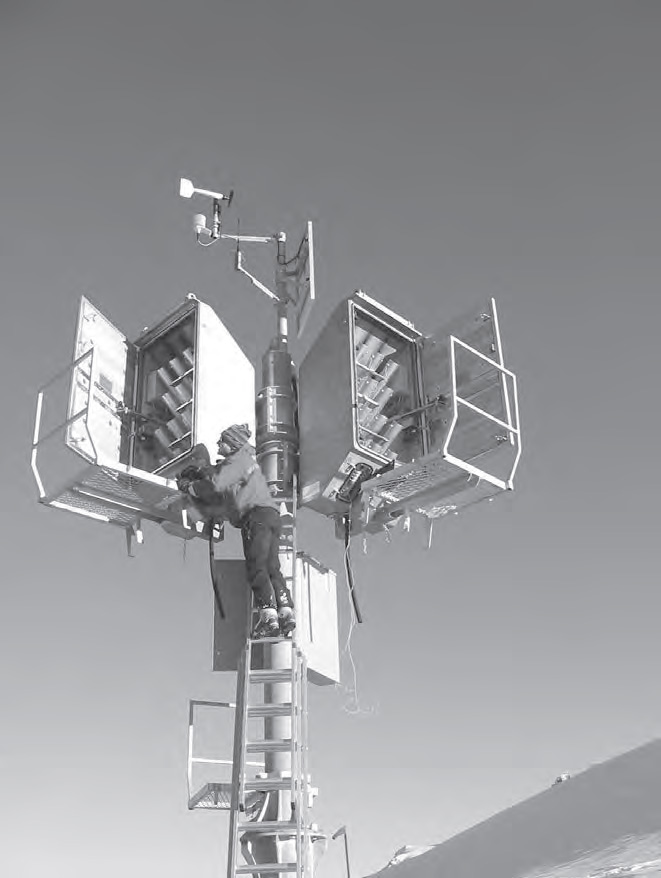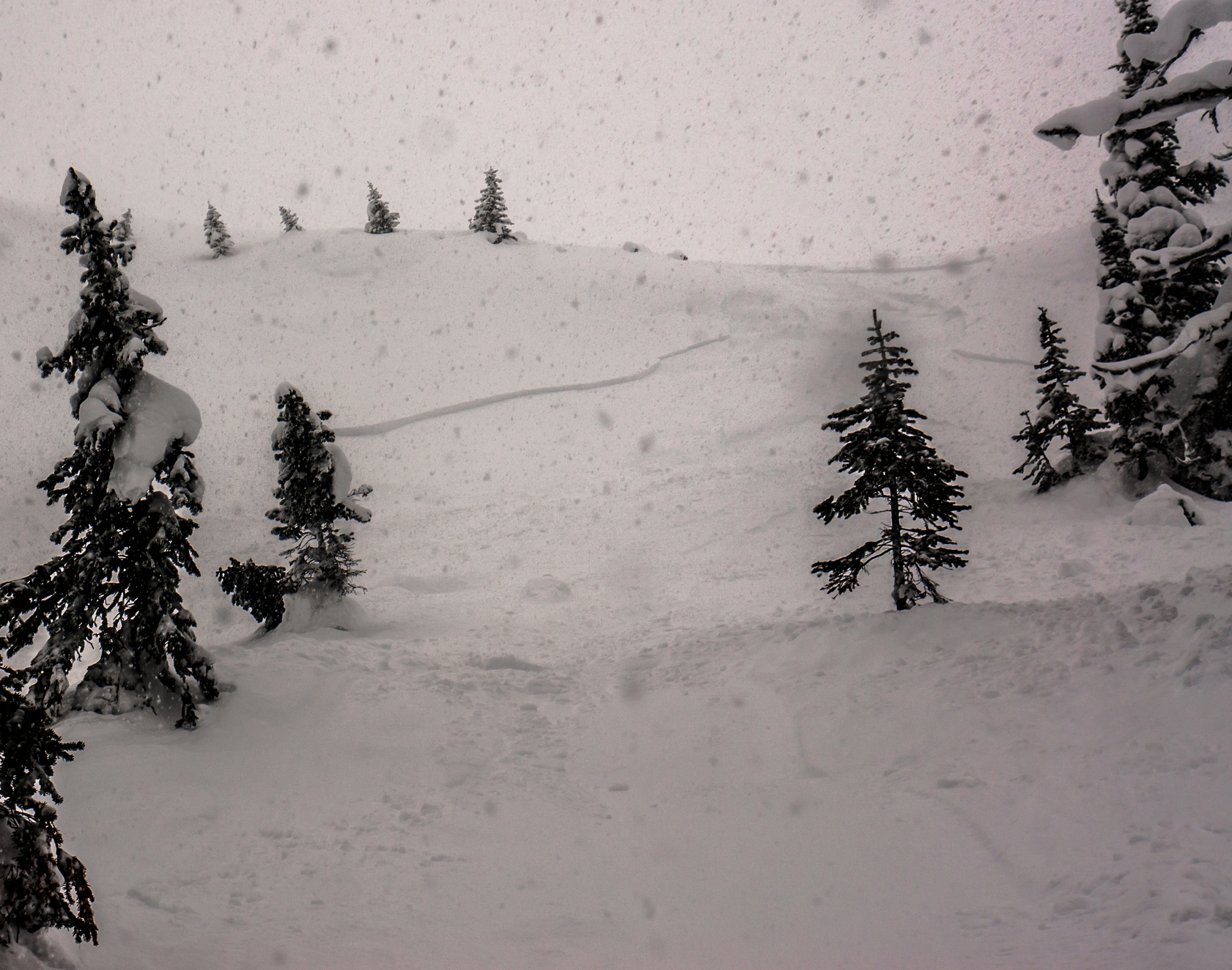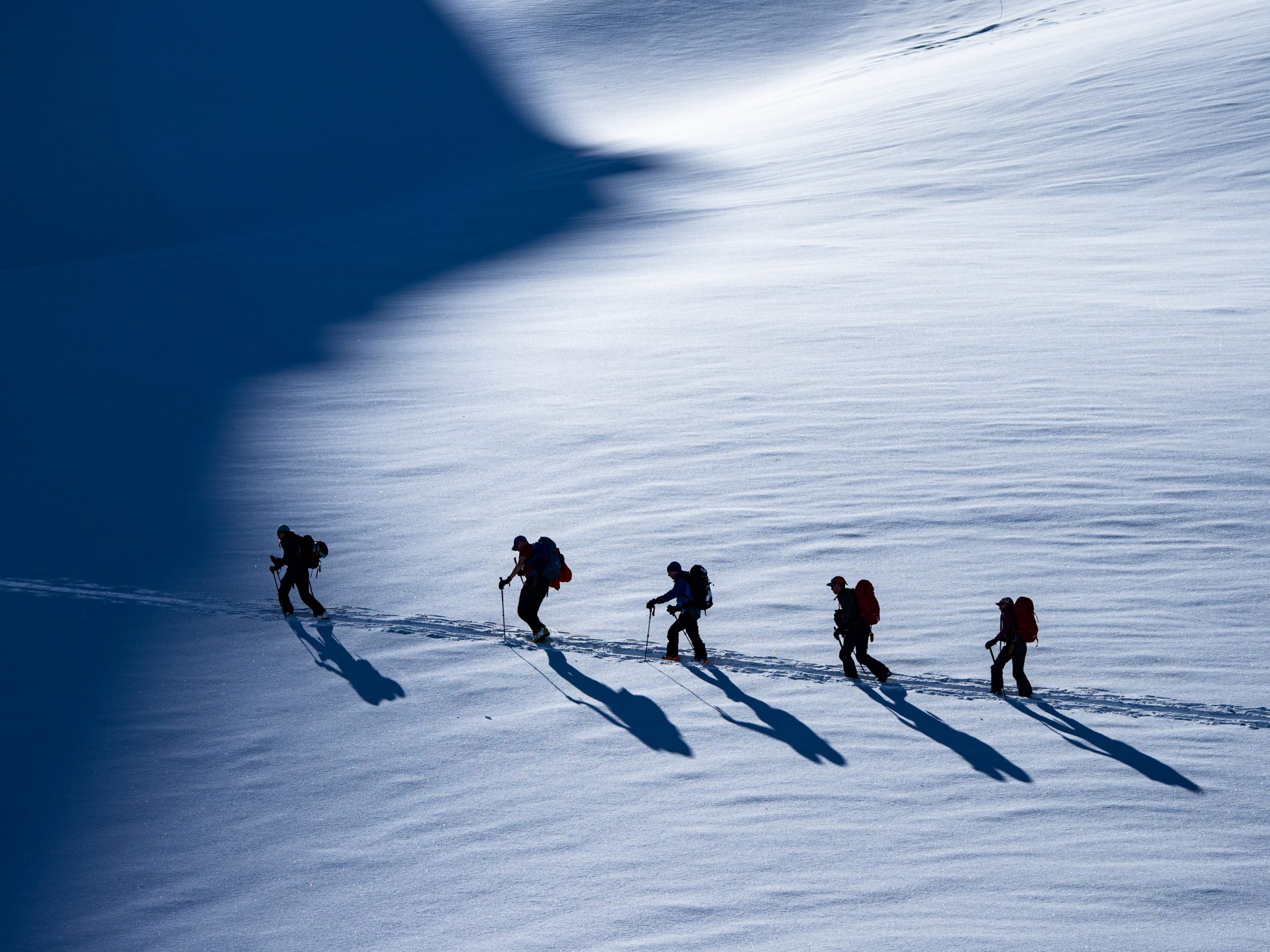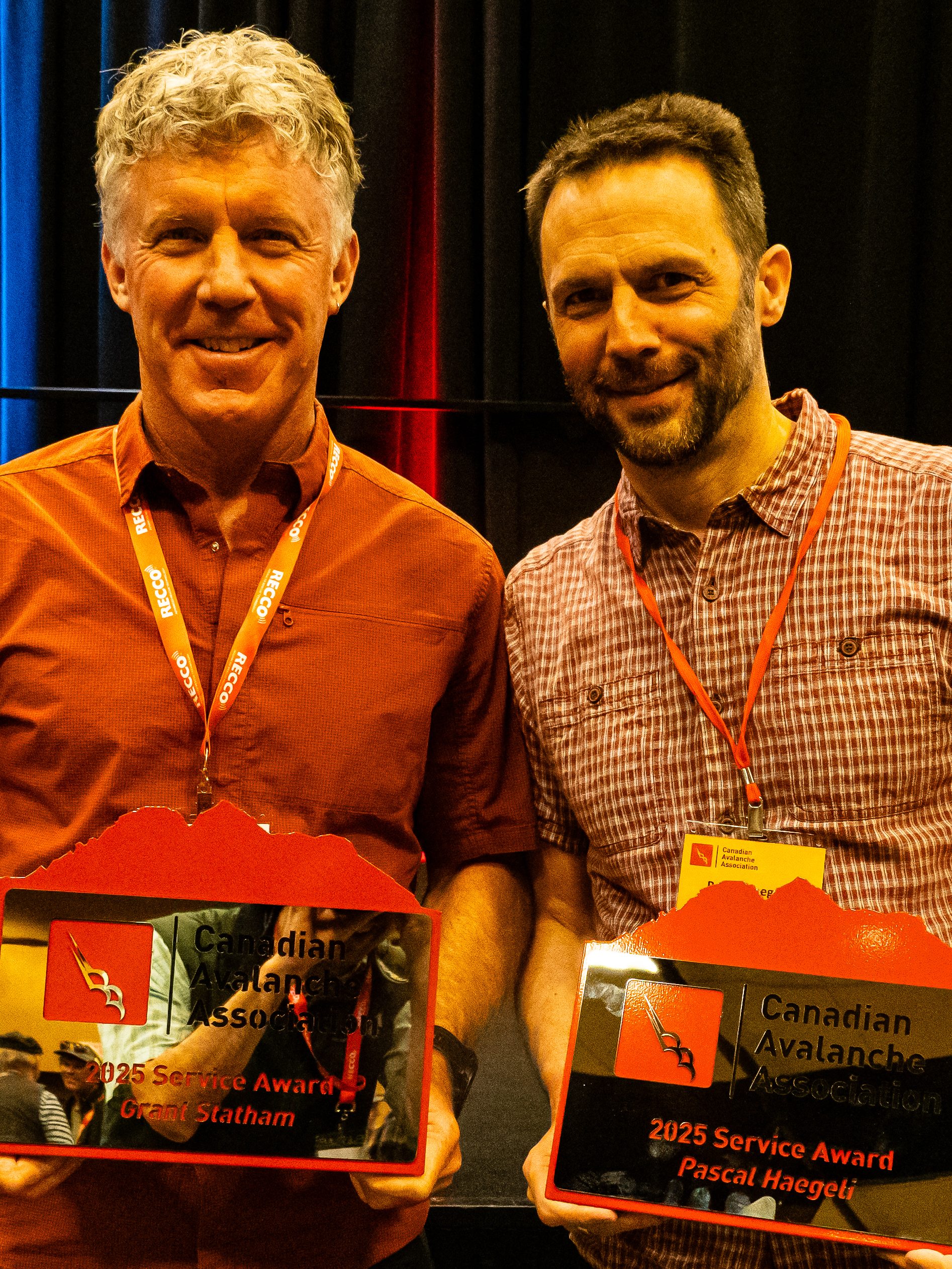By Rob Hemming
Note: This article was initially published in The Avalanche Journal, Volume 78, Winter 2005-06. It looks at one of the first Avalanche Guard installations in Canada.
Around the turn of the century there was a small cluster of natural snow avalanches from a north-facing slide path affecting the Trans-Canada Highway at the west boundary of Glacier National Park. The last event, in March 2003, triggered a review within the BC Ministry of Transportation. The review determined that a means of artificially triggering avalanches, other than helicopter bombing, was required to ensure the safety of highway users and minimize closure times in this area.
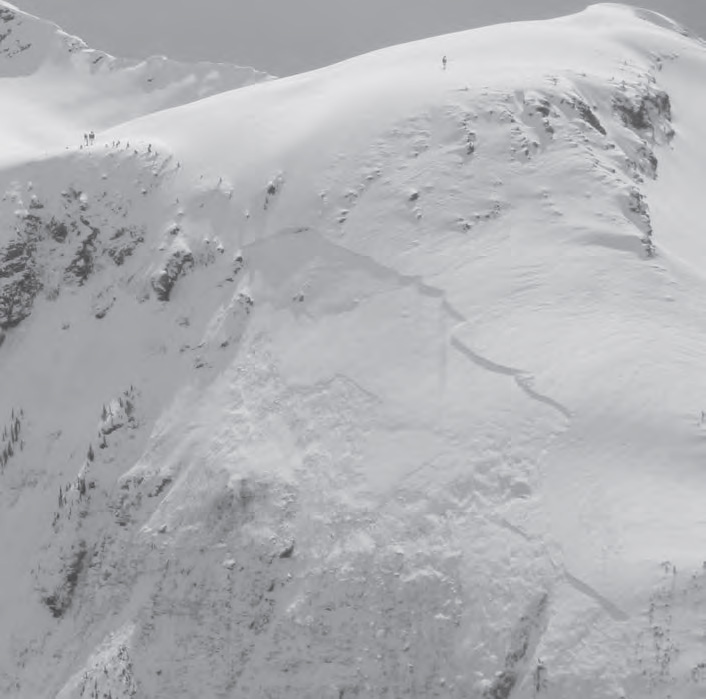
The staff at the Avalanche and Weather Programs headquarters located in Victoria immediately began the process of determining what was required and finding the money to make it happen. After a careful analysis of the problem, a business case was developed that led to the formation of a framework for a bidding process. The Provincial Purchasing Commission then issued a request for proposals and the Avalanche Guard system was selected on the merits of the proposal made by CIL/Orion in July 2004.
The Avalanche Guard, produced in Switzerland for Outdoor Engineers, Inc., of Golden, Colorado, launches a 4 kg charge of high explosive into the start zone of an avalanche path, from a safe location, day or night, in any weather. While this device was already in use to protect facilities in Europe and in the US, this one would be the first installation in Canada.
The ministry avalanche crew in Revelstoke was pleased to get another tool to deal with this problem. This slide path, named Laurie for the old mining town that used to be located nearby, is a beauty. Located 50 km east of Revelstoke, it shares a narrow winding portion of the transportation corridor with a number of other large slide paths. Many avalanche events are recorded in the vicinity of Laurie every winter.
The Canadian Pacific Railway right-of-way is protected by concrete snow sheds and tunnels in this area. The Laurie tunnel, originally constructed more than a hundred years ago, traverses the Laurie slide path near the bottom of its track. Three snow sheds do a good job of protecting the highway from the large south-facing slide paths. The valley bottom acts like a massive ditch that contains all but the largest avalanches produced by Laurie before they reach the highway. The estimated return period for one of these larger avalanches reaching the highway is about once every three to four years.
The start zone is large and complex, with many trigger areas and an average slope angle of 40 degrees. Shaped like a catcher’s mitt and lee to prevailing winds, it has a propensity for rapid snow loading. Snow supply is abundant. In mid-winter, I would expect to find at least three and a half metres of snow at our profile site, on the west side of the path at 2,100 metres. Four separate trigger areas within this start zone can, independently, produce a snow avalanche large enough to affect the highway, given the correct conditions.
Below the start zone, deep gullies with an average slope of 35 degrees converge just above the CPR right-of-way. The runout zone begins at the Illecillewaet river bed at 900 metres and ends above the highway, on the other side of the valley. Deposits sometimes contain mature trees, river ice and water-saturated snow. Some of these deposits have temporarily dammed large amounts of water. If you hike around this area in the summer, you’ll find extensive tree damage, and on the uphill side of the highway, river rock that has been scooped up out of the river, 100 metres below.
The Laurie path is the only north aspect slide path on the east end of our program area. It’s hard to justify lengthy road closures during periods of high uncertainty and/or elevated hazard levels, when historically most snow avalanches produced by this path do not affect the highway. Before this device was installed, the only way to eliminate the hazard in a timely manner was by artificially triggering avalanches by helicopter, which was not always an option. Even when a window of opportunity is open, flying conditions are challenging. Downdrafts, flat light and poor reference by themselves or in combination have resulted in scrubbed or incomplete missions, despite having access to some of the best mountain pilots in the world. Now, it’s a relatively simple matter to set up a highway closure, shoot up to six targets high in the start zone of Laurie and get the highway reopened, all in less than half an hour if there is no cleanup.
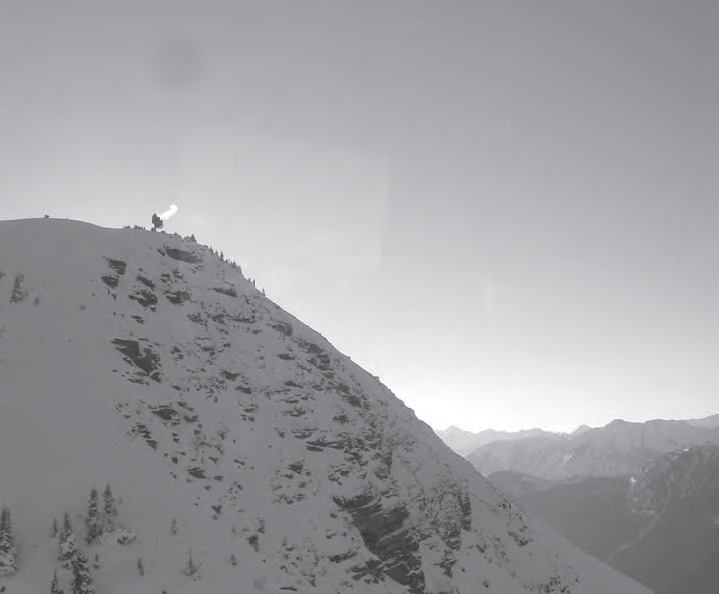
The Avalanche Guard magazines are located along the top and side of the Laurie slide path. Six magazines are mounted on four towers at three different sites. Pointed at a specific target, a magazine can hold 10 rounds of fused explosives, each in its own launch tube. At the base of the tube is a launch cup filled with a precise amount of propellant powder. The device is fired from a ministry pickup truck, using a dedicated laptop computer called the “fire control computer.” Using special encrypted software, communication is established by radio with the site. If everything is correct, the firing sequence is initiated. When the firing signal is sent, the propellant powder is ignited and shoots the round out of the launch tube at the target. As the round leaves the magazine, special pull-wire lighters are pulled by lanyards connected to the launch tube and two safety-fuse assemblies attached to the charge are lit. Geo-phones located beside the towers detect the detonation and the entire mission is recorded on the computer’s hard drive. Very slick.
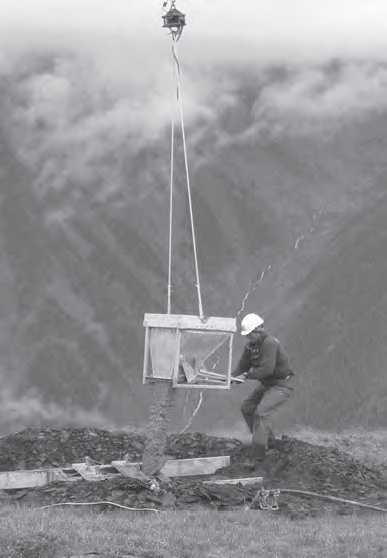
Construction of the facility began in the summer of 2004. Scott Aitken was the construction manager for the ministry, while Randy Gliege and his crew from Summit Lifts Ltd. out of Fernie, B.C., did the installation. Concrete foundations were poured in late summer and the steel arrived in the fall. It was assembled on the valley floor and then flown onto the foundations above the target areas using a Bell 214 from East West helicopters.
Before the end of November 2004, the first test shots had been fired into the start zone. Dave Sly from Maple Leaf Powder Co. and Everett Clausen of CIL/Orion provided the technical explosive expertise. Oswald Graber of Outdoor Engineer, Inc. ensured quality testing and trouble-shooting for the software, hardware, and communications.
Prior to and during this period, a squall of activity was taking place in Victoria. Permits had to be secured. Agreements were formalized with the stakeholders, including Parks Canada (part of the start zone is in Glacier National Park) and the Federal Explosives Regulatory Division. Some of the explosive components are manufactured in the US and had to be shipped across the border. New procedures had to be produced and submitted to WCB for approval. Can you imagine? Much acclaim has to be heaped on Mike Boissonneault and his team for making it happen. Niko Weis and especially Doug Wilson were instrumental in the process. Bruce Allen, his crew and Brant Benum from Revelstoke did a lot of work to ensure the success of this project as well.
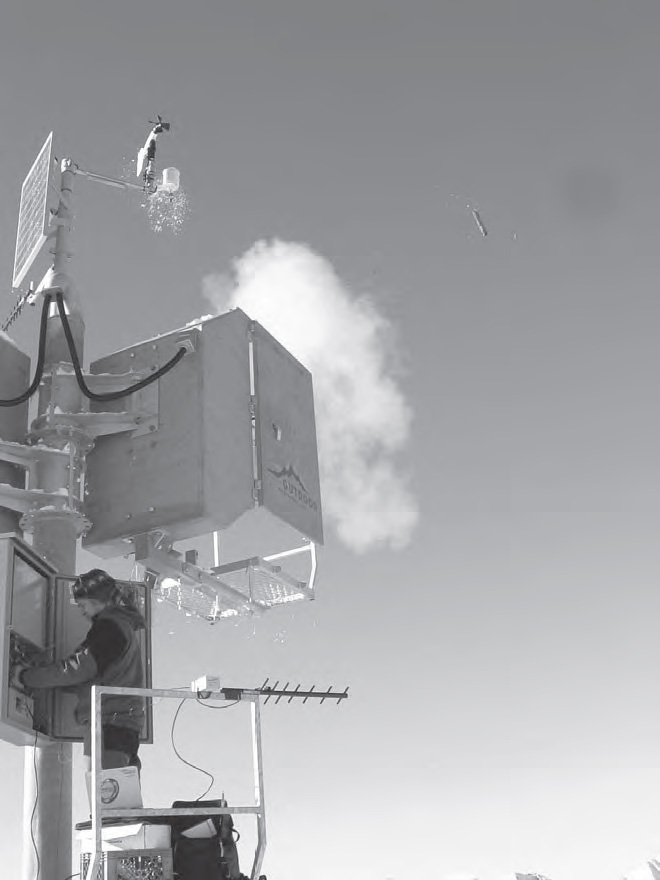
The Avalanche Guard was fully operationally last season and performance was good. The solar panels kept the batteries powered up through the dark and cold months of mid-winter despite the inevitable rime events. Communication with the site was never a problem. The explosives components worked well. Accuracy is not and will never be as good as using artillery but it is better than any other kind of launcher technology available today. This distributor definitely has a product that will satisfy the needs of some customers in North America.
I believe that our community needs to look for and test new technologies. I’m proud that my employer has been a leader in this regard for the last 30 years. I think it’s great that companies like CIL/Orion and Avalanche Guard Inc. are developing innovative and practical methods to artificially trigger avalanches. I call upon our universities and progressive companies to research and develop new ways to artificially trigger snow avalanches that will complement our existing technologies.

